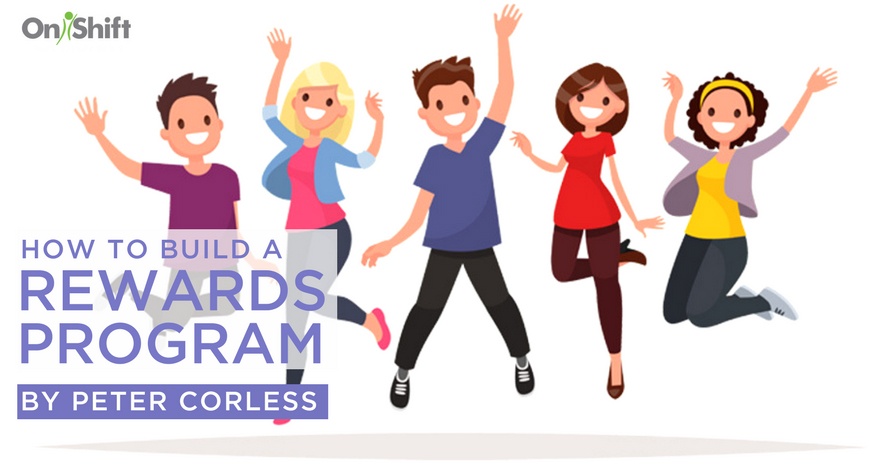February 2, 2018 | Peter Corless
February 2, 2018 | Peter Corless

A fun and inclusive rewards program is an essential component for attracting, engaging and retaining employees, particularly for post-acute care and senior living providers struggling with recruitment and retention.
A rewards program is a universal, easy-to-understand concept that drives employee engagement and promotes better performance. And when employees are invested and do their best work, your residents receive better care and your business thrives.
But what exactly should a rewards program look like? Let's look at how to build a successful rewards program that resonates and boosts employee engagement.
1. Talk To Your Employees
Get employees engaged with your effort right off the bat. Let them know you’re working on developing a rewards program to thank them for their good work and would appreciate their input. How would they like to be rewarded? Which behaviors do they think they should be rewarded for?
Asking employees for their initial feedback shows you value their input and are invested in their success with your new program. They may provide ideas that are worth implementing in the rewards program.
To initiate the conversation at multi-facility companies, the HR department can send out an online survey or schedule face-to-face sit-down talks, individually or in groups. Involving all workers ensures everyone has a voice to shape a rewards program that appeals to employees of all ages.
2. Establish Your Community’s Values & Behaviors, Then Reinforce Them
What are your core values? That is the #1 question executives and managers need to ask because rewards programs need to align with those values. Having conversations about your organization’s core values will help reinforce them with staff and help you develop a rewards program to boost employee engagement - which ultimately drives your business.
Rewards programs can then be tied into a company’s vision. For instance, if a community values charitable actions, rewards programs can be tied to that vision to encourage employees to volunteer on a regular basis. Here are some popular behaviors to reward:
Keep in mind, it’s important that employees see reward behaviors as objective and fair and all have an equal opportunity to earn them. The behaviors should not be influenced by how an individual manager embraces the rewards program.
3. Curate Your List Of Rewards
Work in the rewards suggested by your employees and make sure they know how to earn each one. Not sure what to reward your employees? Here are some ideas:
There are many options for rewards—some of which cost very little in terms of monetary expense.
4. Kick-Off Your Program
Once your core values are established, you’ve decided which behaviors warrant rewards and you've determined your list of rewards, it’s time to implement the program. Every community will implement differently, but I’ve found that the most successful programs use a points-based system.
Points are easy to understand and put some structure around your rewards program. Make sure you designate points for each behavior. For example, picking up a shift earns employees 5 points, and reaching their 90-day tenure milestone earns them 15.
5. Incorporate Technology For Visibility & Efficiency
A rewards program won’t work for employees if it isn’t simple, transparent and systematic. An automated rewards platform makes it easy for employees to see how many points they’ve accumulated and how many they need to earn their next reward. Many modern rewards systems even use leaderboards, so employees can engage in friendly competition that drives performance.
Providers should consider solutions that offer employee performance reporting. Giving management visibility into each employee’s number of call-offs, early and late punches and other data allows them to proactively coach those that need it.
Incorporating robust rewards programs should be a top priority for long-term care and senior living in 2018 to increase engagement, boost morale and encourage stellar performance. I hope my 5-step process can help you kickstart your implementation.
Subscribe to the OnShift Blog
Recent Posts
Categories
About Peter Corless
Peter Corless is Executive Vice President of Enterprise Development for OnShift. Peter is a recognized HR leader in post-acute care and is well-known for his achievements at some of the country’s largest post-acute care organizations, including Kindred Healthcare and Genesis HealthCare. As an experienced, chief administrative and human resources officer within these organizations, he developed strategies that reduced turnover, improved recruiting and hiring strategies, and reduced labor costs.
See for yourself why thousands of providers rely on OnShift’s innovative software for recruitment, hiring, workforce management, pay and engagement. Request your personalized demo today.
